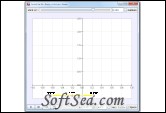|
Simultaneity Spacetime Diagram Model 
|
Relative motion effect analysis. Simultaneity Spacetime Diagram model uses light-trajectories to show the effect of relative motion when observing (recording) events in special relativity. In the default scenario, an explosion (an event) at the center of a right-moving stick occurs at t=0 and the arrival of the explosion light signal at each end is recorded. The arrival event at the left end occurs before the arrival event at the right end because the stick is moving. How do the location and time of these events change if they are observed in a reference frame (the Other Frame) in which the stick is stationary.
The Simultaneity Spacetime Diagram model was written for the study of special relativity using spacetime diagrams. Initial conditions, such as the locations of the explosion and the detectors, can be adjusted by dragging before the simulation is run. The slider can be used to change the speed of the stick. A third view shows the stick and the wavefront in space. More importantly, a checkbox allows users to compare the predictions of Galilean and special relativity in order to observe how the assumption of a constant speed of light leads to the relativity of simultaneity.
The Simultaneity Spacetime Diagram model is distributed as a ready-to-run (compiled) Java archive.?Double clicking the ejs_sr_SimultaneitySpacetimeDiagram.jar file will run the program if Java is installed.
Requirements:
* Java
The license of this software is Freeware, you can free download and free use this graphing software.
